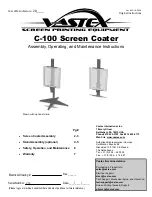
By using a multi-primary color wheel and
BrilliantColor™ technology, we are able to
expand the color gamut to that defined by
the outer polygon (dotted line).
Figure 4 – BrilliantColor™ Color Gamut
This new color gamut represents colors
in nature better than the three color gamut
typically used in today’s display systems.
The new gamut affords better balanced
chrominance and luminance for life-like
colors giving the viewer the ultimate visual
experience.
Improved Color Gamut using just RGB
Color Wheels
Color processing improvements may
also be realized when BrilliantColor™
technology is applied to traditional red,
green, blue (RGB) color wheels. All color
wheels have a transition region between the
different color filters. During the period of
time that this region illuminates the DMD,
the color processor is uncertain what color
of light is actually on the DMD. For
example, when the red/green spoke
illuminates the DMD, the DMD sees a
combination of red and green light.
Color processing can take advantage of
this situation. Combining red with green
yields yellow light. Similarly, combining
red with blue yields magenta while
combining blue with green yields cyan
(reference Figure 5). In this case, the
yellow, magenta, and cyan color points lie
within the gamut triangle defined by the red,
green, and blue filter color points (since this
color is created by combining two colors
within the gamut). This is slightly different
from a multi-primary color wheel system
which adds new color points outside of the
triangle.
Figure 5 -- RGB Color Wheel and Spokes
BrilliantColor™ technology can be
configured to process the spoke regions as a
secondary color (e.g. the green/red spoke
would be processed as yellow). The color
processor is able to use the yellow, cyan,
and magenta light to improve the brightness
of the display which allows the use of more
saturated primaries (reference Figure 6).
Figure 6 - Brighter Color Gamut from RGB Color
Wheel
4























